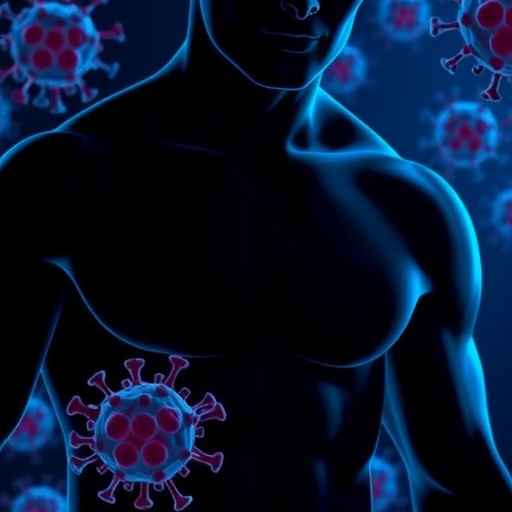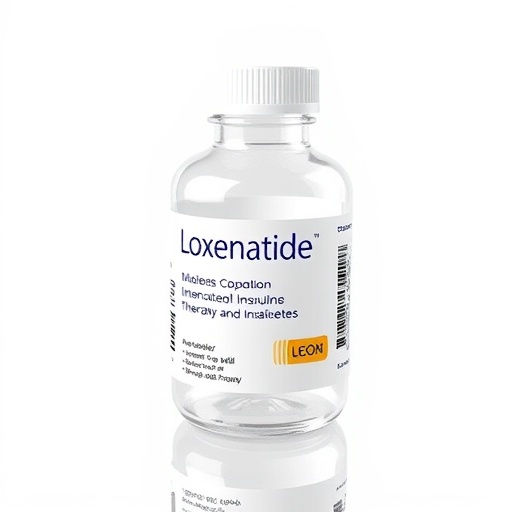
A groundbreaking study published in the Journal of Translational Medicine has revealed that quercetin, a naturally occurring flavonoid, could hold the key to advancing treatments for spinal cord injury (SCI). This research, conducted by Liu, X. and colleagues, uncovers the potential of quercetin to not only promote angiogenesis—the formation of new blood vessels—but also to safeguard the integrity of the blood-spinal cord barrier. This dual mechanism of action is particularly significant considering the challenges faced in the realm of spinal cord injuries, where restoring blood flow and protecting neural tissue are paramount for recovery.
The study meticulously investigates the role of the phosphoinositide 3-kinase (PI3K)/Akt signaling pathway, a crucial cellular signaling mechanism that regulates various cellular functions including growth, survival, and angiogenesis. By targeting this pathway, quercetin demonstrates its ability to enhance angiogenesis, which is essential for nourishing damaged spinal tissue and facilitating recovery. This is particularly relevant in SCI, where blood flow is often compromised, leading to secondary injuries and worsened outcomes for patients.
The authors present a comprehensive analysis, leveraging both in vitro and in vivo models to assess the effects of quercetin on spinal cord damage. Initial experiments showed promising results, indicating that quercetin significantly improved cell viability in neural cells subjected to injury. This suggests that quercetin may not only promote the survival of existing neurons but also support the regeneration of new neurons, thereby playing a crucial role in recovery after SCI.
Additionally, the research team reports robust evidence that quercetin enhances angiogenesis in the context of spinal cord injuries. By stimulating the formation of new blood vessels, quercetin acts as a vital contributor to increasing blood flow to the injured site. This not only aids in delivering necessary nutrients and oxygen to the affected area but also facilitates the removal of metabolic waste products, creating a more favorable environment for neural repair.
One of the most significant findings of the research involves the protective effect quercetin exerts on the blood-spinal cord barrier. This barrier is essential for maintaining the homeostasis of the spinal cord and preventing the influx of harmful substances. In instances of spinal injury, the barrier often becomes compromised, opening the door to inflammatory processes that can exacerbate injury. Quercetin’s ability to maintain the integrity of this barrier suggests that it could serve as a therapeutic agent to mitigate secondary injury mechanisms that are triggered post-SCI.
Through the manipulation of the PI3K/Akt pathway, the researchers establish a causal link between quercetin administration and its protective mechanisms. This connection offers a valuable insight into the biochemical pathways that underlie the benefits of quercetin. The implications of these findings could extend beyond spinal cord injuries, potentially paving the way for novel therapeutic strategies for a wide range of neurological disorders.
Interestingly, quercetin is naturally found in various fruits and vegetables, including apples, onions, and berries, making it a highly accessible compound. This raises the intriguing possibility of dietary interventions as a means to harness the benefits of quercetin, which could be particularly advantageous for individuals at risk of SCI or those undergoing rehabilitation. Future studies may explore the dosage and bioavailability of quercetin-rich foods and supplements to optimize its therapeutic potential.
Moreover, the findings of Liu et al. encourage a reassessment of pharmacological approaches to treating spinal cord injuries. The conventional focus on surgical intervention and rehabilitation could be complemented by integrative strategies that include nutritional supplementation. With further research, quercetin may be developed into a standardized treatment option, offering patients a holistic approach to recovery.
The implications of this study extend far beyond the confines of the laboratory. As the quest for effective therapies for spinal cord injury continues, breakthroughs in understanding how natural compounds like quercetin can mitigate injury and enhance recovery will undoubtedly inspire further exploration in the field of regenerative medicine. Collaborative efforts among neuroscientists, nutritionists, and clinicians could unveil comprehensive strategies that leverage the synergistic effects of pharmaceuticals and dietary interventions.
Additionally, public awareness of the findings could lead to increased interest in the consumption of flavonoid-rich foods, potentially resulting in preventative health measures that empower individuals to support their neurological health through diet. Educating the public about the protective benefits of quercetin is indeed a pivotal step in fostering proactive healthcare choices that optimize spinal cord health.
The essence of this research underscores the importance of interdisciplinary approaches to complex health challenges. By integrating knowledge from diverse fields, researchers can develop innovative solutions that address multifaceted health issues such as spinal cord injuries. Hence, initiatives that encourage collaboration among scientists and healthcare professionals will be fundamental in translating scientific discoveries into viable treatments.
As we advance towards a future where neurological injuries can be addressed more effectively, the role of compounds like quercetin could redefine therapeutic strategies. This study not only opens new avenues for treatment but also encourages continued exploration of the synergy between natural compounds and established medical practices. Each new finding brings us closer to unlocking the full potential of our body’s ability to heal and regenerate after injury.
In conclusion, the significant findings presented by Liu and colleagues provide a compelling basis for further exploration of quercetin as a therapeutic agent for spinal cord injuries. The potential to enhance angiogenesis, protect the blood-spinal cord barrier, and support neuronal survival positions quercetin as a promising candidate in translational medicine. As we look ahead, the integration of dietary components with traditional medical treatments holds promise for revolutionizing recovery strategies in neurology.
Subject of Research: Quercetin’s effects on spinal cord injury recovery.
Article Title: Quercetin promotes angiogenesis and protects the blood-spinal cord barrier structure after spinal cord injury by targeting the PI3K/Akt signaling pathway.
Article References:
Liu, X., Liu, X., Luo, S. et al. Quercetin promotes angiogenesis and protects the blood-spinal cord barrier structure after spinal cord injury by targeting the PI3K/Akt signaling pathway.
J Transl Med 23, 958 (2025). https://doi.org/10.1186/s12967-025-06973-7
Image Credits: AI Generated
DOI: 10.1186/s12967-025-06973-7
Keywords: Quercetin, spinal cord injury, PI3K/Akt, angiogenesis, blood-spinal cord barrier.
Tags: angiogenesis in SCI treatmentblood-spinal cord barrier integritycellular signaling in spinal recoveryenhancing cell viability post-injuryflavonoids in neuroprotectioninnovative treatments for spinal cord damagenatural compounds for SCI therapyneuroprotective properties of quercetinPI3K/Akt signaling pathwaypromoting blood vessel formationquercetin and spinal cord injurytranslational medicine research on SCI




